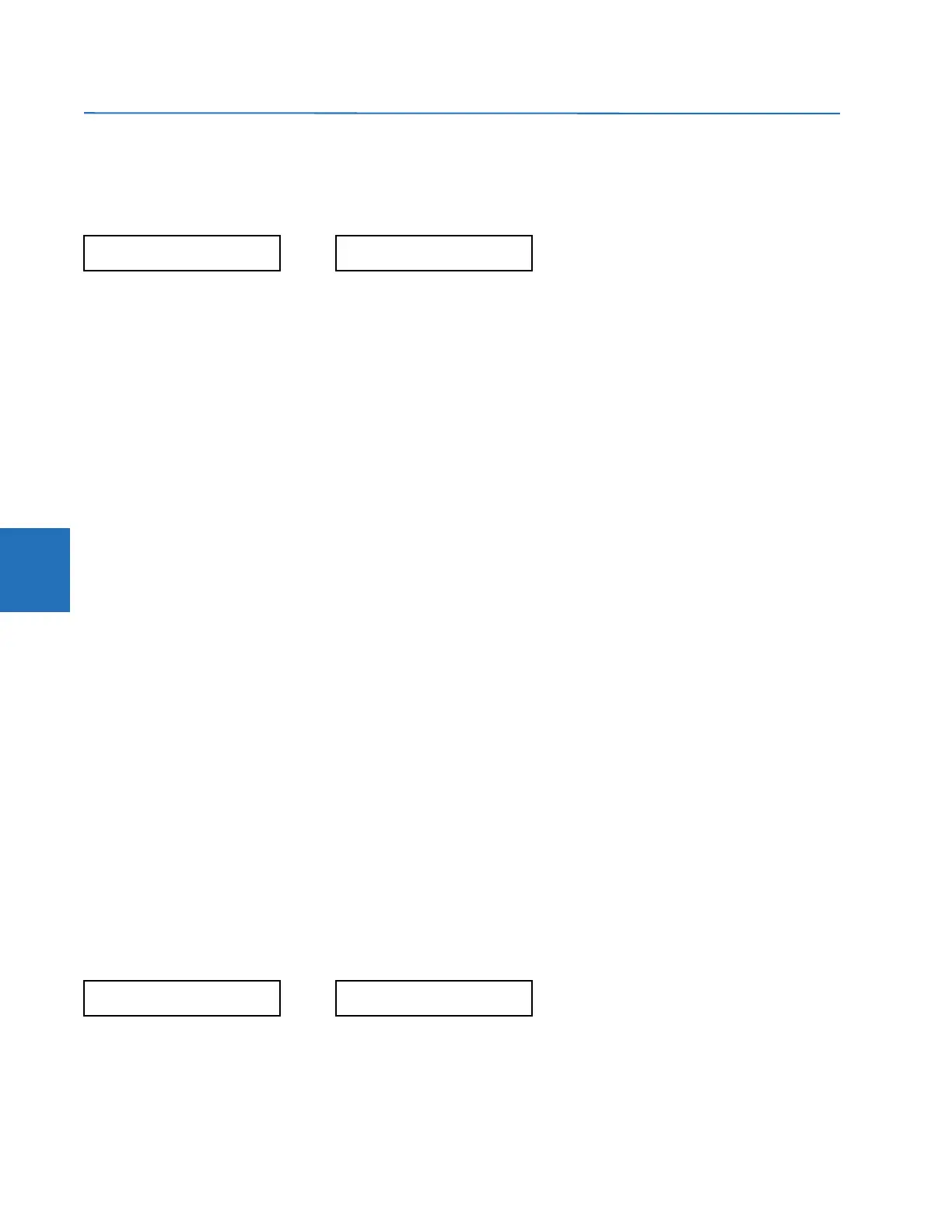5-328 F35 MULTIPLE FEEDER PROTECTION SYSTEM – INSTRUCTION MANUAL
TESTING CHAPTER 5: SETTINGS
5
5.11 Testing
5.11.1 Test mode function
SETTINGS TESTING TEST MODE FUNCTION
The F35 provides a test facility to verify the functionality of contact inputs and outputs, some communication functions
and the phasor measurement unit (where applicable), using simulated conditions.
The test mode can be in any of three states: Disabled, Isolated, or Forcible.
The Disabled mode is intended for normal in service operation; relay protection, control and communication function is
normal. Test features are disabled, except channel tests and phasor measurement unit tests remain usable when
provided.
The Isolated mode is intended to allow the relay to be quickly placed in a state where the relay cannot negatively impact
the power system or other parts of the substation automation system. This is to allow changing settings, loading new
firmware, changing hardware modules, and changing communication connections. As far as practical all relay output
signals are blocked. Contact outputs are de-energized, latching outputs are frozen. Commands to bricks are blocked.
GOOSE transmissions have their "simulation" flag (also known as "test" flag) set, which results in the messages not being
accepted by compliant receiving devices that do not have a "Sim" data attribute set. The quality attribute of values that
can be output via 61850 MMS services are set to "invalid," which results in the values not being used for operational
purposes by compliant receiving devices. Direct I/O channel tests and PMU tests are usable on applicable models.
The Forcible mode is intended for testing involving forcing relay operation by test signal injection and verifying correct
relay output. This mode is also for tests to verify the relay outputs (both contact and communications) have the intended
impact on specific power system devices or on specific other substation automation devices. Contact outputs can be
selectively enabled or forced as described in the following two sections. Shared outputs to bricks have their test mode flag
raised, which results in their value only being accepted by relays also in forcible mode. GOOSE transmissions have the
"simulation" flag set, which results in these only being accepted by other devices that have their "Sim" data attribute set.
The "Sim" data attribute in the relay is set, so that if GOOSE messages are received with the "simulation" flag set, these are
used in place of the normal messages. The quality attribute of values that are output via 61850 MMS services are set to
"valid" + "test," which signals that the values should not be used for operational purposes.
Otherwise, the UR remains fully operational while in the Forcible test mode, allowing for various testing procedures. In
particular, the protection and control elements, and FlexLogic function normally. Other than the IEC 61850 protocol,
communications based inputs and outputs remain fully operational. The test procedure must take this into account. Direct
I/O channel tests and PMU tests are usable on applicable models.
The test mode can be selected either through the front panel, through EnerVista UR Setup, or through IEC 61850 control to
LLN0.Mod. LLN0.Mod.ctlVal "on" selects Disabled, "test/blocked" selects Isolated, and "test" selects Forcible. The
TEST MODE
FUNCTION
setting can only be changed by a direct user command. Following a restart, power up, settings upload, or
firmware upgrade, the test mode remains at the last programmed value. This allows a UR that has been placed in isolated
mode to remain isolated during testing and maintenance activities.
5.11.2 Test mode forcing
SETTINGS TESTING TEST MODE FORCING
When in Forcible mode, the operand selected by the
TEST MODE FORCING setting dictates further response of the F35 to
testing conditions, as described in the following two sections.
The test mode state is indicated on the relay front panel by a combination of the Test Mode LED indicator, the In-Service
LED indicator, and by the critical fail relay, as shown in the following table.
TESTING
TEST MODE
FUNCTION: Disabled
Range: Disabled, Isolated, Forcible
TESTING
TEST MODE FORCING:
On
Range: FlexLogic operand

